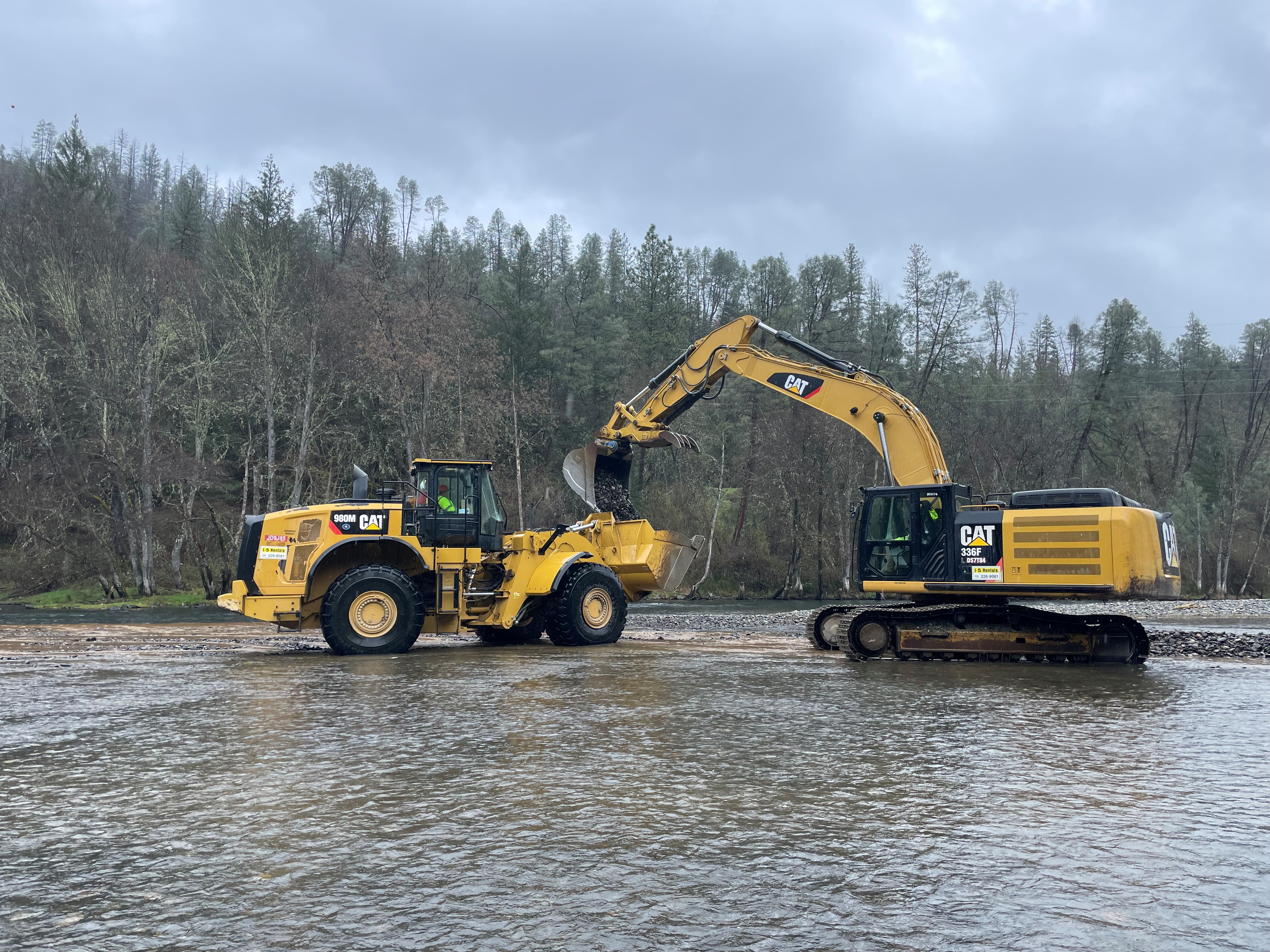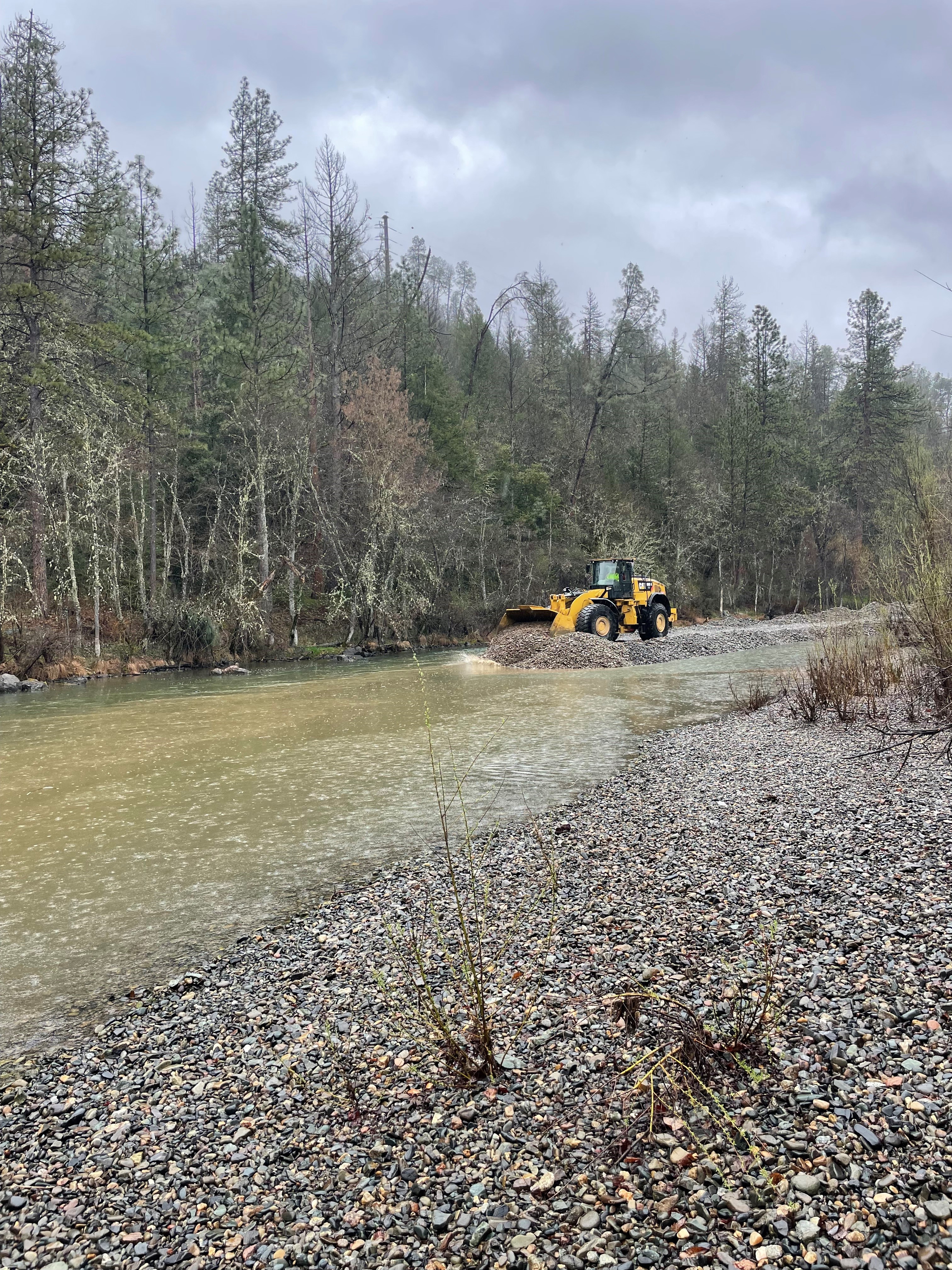
The Program has completed the final environmental assessment for the Sediment and Wood Augmentation Along the Trinity River Restoration Reach. It can be located by following this link: U.S. bureau of Reclamation Trinity River… 2024. – at the TRRP DataPort. The project is needed to enhance existing salmonid habitat and provide spawning and rearing habitat in the Trinity River below Lewiston Dam. This will be done by adding suitable-sized sediment and wood through manual augmentation.

The project allows for wood and sediment placement to occur at four new augmentation sites (Dark Gulch, Trinity House Gulch, Steel Bridge, and Vitzthum Gulch) along with the five existing sites (Trinity River Hatchery, Weir Hole/Sven Olbertson, Cableway, Sawmill, and Lowden Ranch). Augmentation below the ordinary high-water mark but above the wetted channel may take place all year. High flow sediment augmentation (also known as injection) will generally take place between April and May when and where it is safe to do so without disrupting juvenile coho salmon. Sediment and wood may be placed directly into the river during the in-channel work period of July 15 to September 15 (or later in coordination with the National Marine Fisheries Service (NMFS) and with best management practices (BMPs) in place).

Each year, at each site, we are allowed to augment up to 8,000 cubic yards of sediment varying in diameter from 0.04 inches to 14 inches. We may also augment up to 700 pieces of wood varying in size from slash to whole trees at a single site per year. Generally, we will augment about 500 to 2,000 cubic yards of 0.375 inch to 5 inch in diameter sediment at a single site per year. The Physical Work Group creates an Augmentation Plan every year, recommending sites for augmentation and quantities of sediment and wood. It is unlikely the Program will augment at more than a few sites per year.
